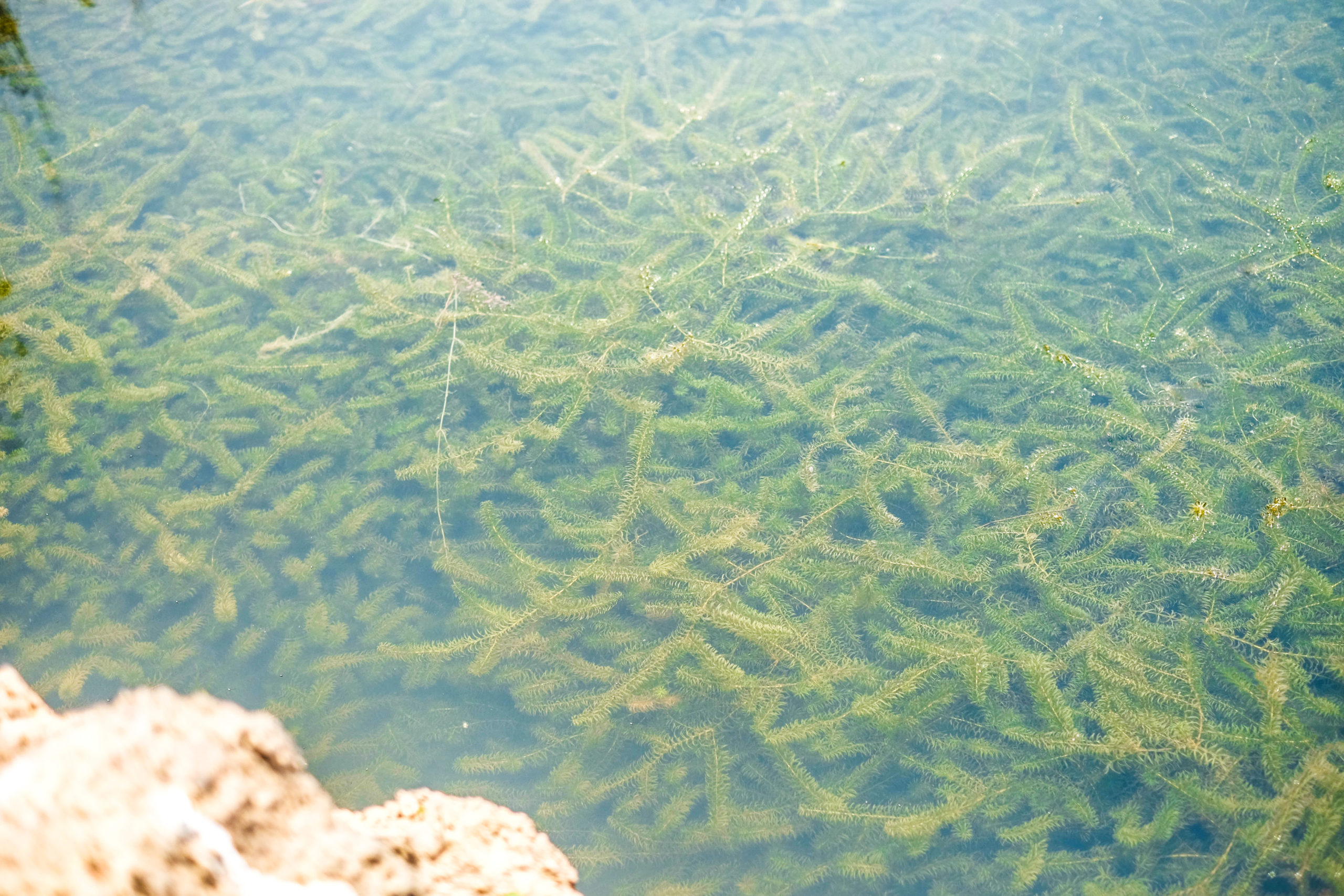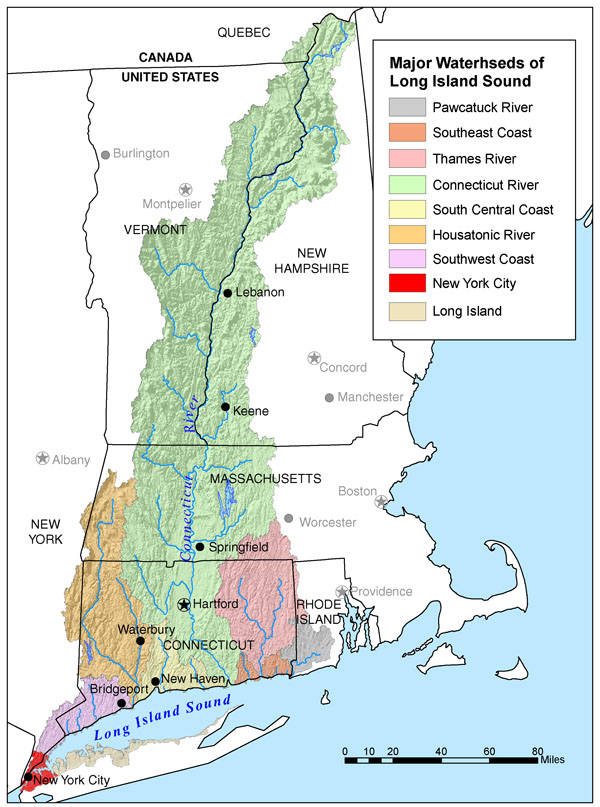While Lake Champlain is host to 51 known nonnative and invasive aquatic species, Hydrilla verticillata has not yet been found in Lake Champlain – and there’s a multi-state effort to keep it that way.
“Hydrilla has been coined as the almost “perfect weed” by the U.S. Army Corps of Engineers due to its rapid growth rate and ability to cover thousands of contiguous acres,” said Meg Modley, NEIWPCC environmental analyst and aquatic invasive species management coordinator at the Lake Champlain Basin Program (LCBP). “It represents a serious threat to the entire Connecticut River watershed.”
Hydrilla first appeared in the Connecticut River in Glastonbury, Connecticut in 2016. In Florida and other parts of the country this federally listed noxious weed grows in dense beds, causing significant economic and ecological impacts. These include shading out native plants, slowing water flow, clogging flood-control canals and pump stations, impeding swimming and boating, and impairing fish habitat by altering water chemistry and lowering oxygen levels.

Management Efforts
A regional effort to address this unwanted species launched in 2017 during a Northeast Aquatic Nuisance Species Panel meeting. Starting in 2018 and 2019, aquatic plant surveys were conducted in Connecticut, Massachusetts, New Hampshire and Vermont to assess presence or absence, finding infestations as far north as Agawam, Massachusetts.
Currently, the United States Fish and Wildlife Service, United States Army Corps of Engineers, Northeast Aquatic Nuisance Species Panel, Connecticut River Conservancy, Connecticut Sea Grant, Lower Connecticut River Valley Council of Governments, as well as the states of New York, Vermont, New Hampshire, Maine, Massachusetts, Connecticut and Rhode Island, and Canadian provinces are collaborating on the issue.
“Hydrilla is extremely difficult and expensive to remove,” said Modley, who also serves as the LCBP representative to the Aquatic Nuisance Species Task Force, “Which is why so many groups are banding together to address it.”
The Northeast Aquatic Nuisance Species Panel is the lead coordinator for the Connecticut River Hydrilla Project, which published the “Connecticut River Hydrilla Control Project Five-Year Management Plan” in 2020. The five-year plan reviews management options which include biocontrol, herbicides, harvesting, benthic barriers, watercraft inspections, and education and outreach. The plan recommends best management practices for the watershed, relying heavily upon monitoring and adaptive management practices.
NEIWPCC is working with our member states to raise awareness and secure funding for hydrilla management efforts. Additionally, the LCBP, a NEIWPCC program partner, employs seasonal boat launch stewards to inspect boats entering the lake and provide invasive species education, including for hydrilla. (And the risk is real: in 2019 a steward intercepted a boat carrying hydrilla during a routine inspection.)

How to Stop the Spread
Look closely, because it doesn’t take much – just a one-inch fragment of hydrilla is enough to begin an infestation. Accidental spread can occur when small hydrilla fragments hitchhike on watercraft, trailers, and other recreational equipment, including in bait buckets and motors, and on draglines and anchors to new water systems. To minimize the potential spread of this aquatic invasive plant, follow these simple steps as outlined by the “Stop Aquatic Hitchhikers!” campaign:
- AVOID: boating through mats of hydrilla. This will minimize fragmentation and the spreading of plants.
- CLEAN: any mud and/or plant fragments from your boat, propeller, boat trailer and all your gear including waders and boots before leaving a water body. Rinse equipment and boat hulls (with high pressure, hot water when possible.)
- DRAIN: all of the water from your boat (including the bilge, live well, motor), trailer, tackle and gear before leaving the area.
- DRY: your boat, trailer and gear after each use.
- NEVER: release aquarium or water garden plants into the wild. Instead, seal them in a plastic bag and throw them in the trash.

For hydrilla management resources including reports, research papers, and a variety of outreach tools, visit the Connecticut River Hydrilla Project webpage.
Watch “Invading the CT River – The Spread of Hydrilla,” produced by the Connecticut Resource Conservation and Development.
Learn more about aquatic nuisance species.